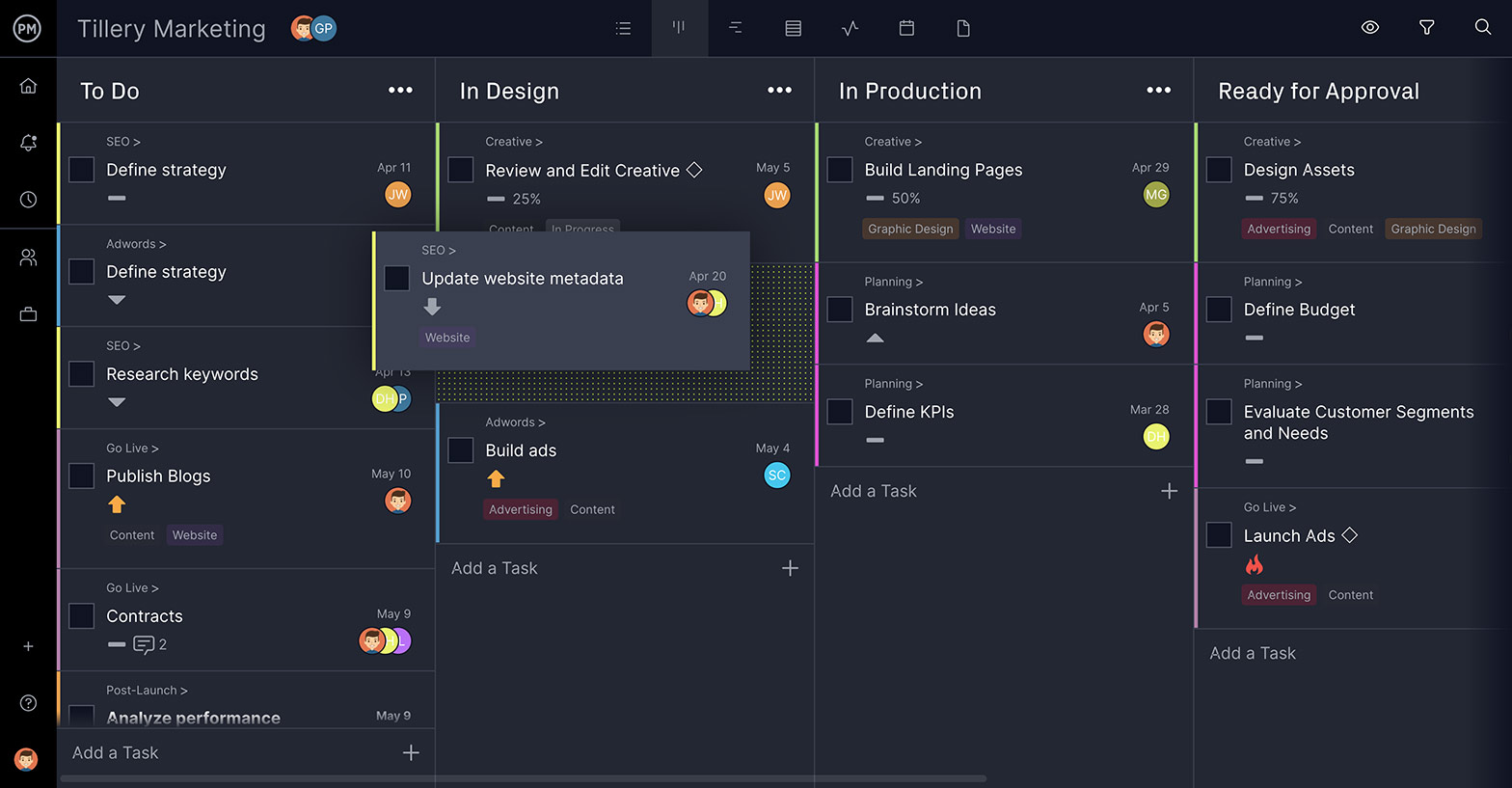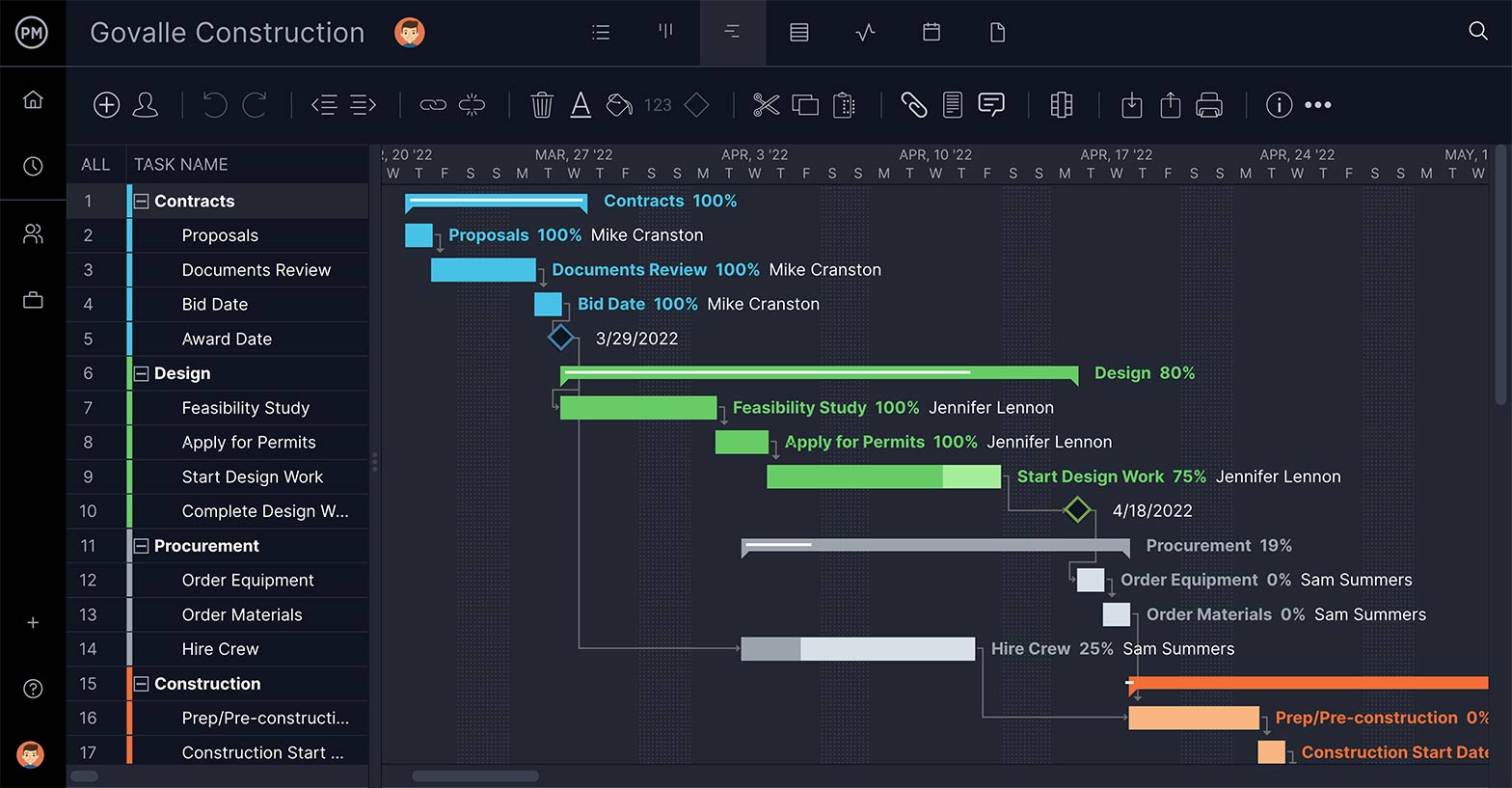Whether you’re interested in hiring a product manager or becoming one yourself, it’s important to take the time to understand both the role and the field of product management.
A product manager plays an integral role in the development of a product plan while also managing the Product Lifecycle Management (PLM) cycle. We’ll go over a product manager’s job description to learn more about the responsibilities, skills and tools a product manager should know. But first, let’s start by defining what a product manager is.
What Is a Product Manager?
A product manager oversees the product lifecycle and leads a product development team. To streamline the product life cycle, product managers have a series of responsibilities such as managing their teams’ workload, helping the team prioritize what matters the most and launching products to market quickly and under budget.
What Does a Product Manager Do?
Product managers are responsible for many things. For one, they lead the team to deliver an end product, meaning they are the ones who come up with the strategy to do so. This is called a product roadmap.
The product manager is responsible for managing the product life cycle that oversees the delivery of the product. They’re also in charge of determining the defining feature of the product, often working with the project manager, sales team and customer success team.
Related: Best Task Management Software of 2023
Think of the product manager as an organizational role. Beyond the responsibilities laid out above, the product manager also leads the marketing efforts for the product which involves forecasting and profit analysis. To do this, product managers use product management software and task management software to stay organized and productive.
Product managers have a lot on their plate. ProjectManager is work and project management software that helps product managers organize and execute project tasks. Our task list is more than a to-do list; it’s a robust tool that connects with every other feature in the tool to organize your work, assign tasks and monitor progress. Product managers can also use our task list for their own work to stay on top of deadlines. Get started with ProjectManager today for free.

Establishes a Vision
The product manager comes up with a product vision and follows up with a strategy. The idea is, again, to create benefits and value for a customer. To establish the vision, the product manager analyzes the market and competitive conditions to strike a clear path toward the business value of the product.
Creates a Plan for the Product Team
The product manager also defines what the product team delivers and creates a project timeline and schedule for implementation. That means making a release plan, which features actionable feedback and ideas, as well as prioritizing product features.
Leadership Style
The leadership of a product manager is cross-functional. They work with nearly everyone, including engineering, sales, marketing and support teams. Therefore, a product manager must have the communication skills to listen and articulate to a wide spectrum of individuals in different disciplines. The product roadmap is a key tool for this purpose and keeps teams aware of updates throughout the product life cycle.
Product Manager Job Description
Role
One responsibility of a product manager includes developing products through market research. They then combine those findings with general requirements, specifications, timetables, pricing and plans to complete development and marketing strategies.
Main Responsibilities
Product managers are often required to do the following:
- Know customer needs through research and market data
- Develop product lines and appraise new ideas for market viability
- Assess competition by comparing products
- Create product marketing communications objectives
- Work with the sales director to create product sales strategies
- Work with customers and sales to evaluate sales call results
- Create long- and short-term product sales forecasts and analyses for management
- Review inventory levels and production schedules for product availability
- Bring new products to market with return-on-investment analysis
- Market new products with sales, advertising and production teams
- Determine product pricing based on market research, production costs and anticipated demand
- Schedule and assign operational requirements to follow up on work results
- Manage the product team, including coaching and disciplinary actions, planning, monitoring and job appraisal
- Continue professional and technical education, attending workshops, seminars, etc.
Skills
The product manager is also expected to have knowledge in the following areas:
- Product management and product development
- People management and customer research
- Requirements analysis including pricing and planning
- Competitive analysis
- Sales planning and inventory control
- Financial planning and strategy
Product Manager Salary
In terms of compensation, the base salary for a product management position ranges greatly depending on position, region and industry. In the U.S., average pay is $114,000 a year but can increase to over $1 million for a CPO or similar executive position.
Product Manager vs. Project Manager
The title of a product manager is unique. Though often confused with a project manager, product managers have different responsibilities and roles.
Product managers lead projects, like project managers, but their projects always involve developing a product to deliver to a customer base. This involves market research, project planning, cross-functional team leadership and more. Read on to learn everything you need to know before hiring, or becoming, a product manager.
Related: Product Manager vs. Project Manager
Product Manager vs. Product Owner
While there are some duties both titles share, a product manager and a product owner are different roles. For example, a product manager is in a strategic position as they work on the product’s vision, company objectives and the market. Product owners, on the other hand, take the product manager’s strategy and make it actionable for cross-functional teams to execute.
Product managers focus on long-term strategy. They’re responsible for looking at the market and discerning trends, identifying new outcomes for the product, supporting the sales team and making sure that the product meets the needs of the value streams. That means they’re going to work on product marketing, work with sales, budgeting, customer care and so forth.
The product owner is almost exclusively a position for projects run in an agile environment. They are more tactical than a product manager and work closely with the teams who deliver the product. They also work with stakeholders and are responsible for attending meetings with teams, organizing demos on the product, doing analysis to make sure that the requirements are ready to be worked on and are involved with testing.
Product Managers Love ProjectManager
Once you hire or are hired as a product manager, you need to prove yourself in the job. No matter your level of proficiency, the key to strong performance is the right tool. ProjectManager is award-winning software that organizes your work to boost efficiency, a valuable tool for product managers.
Manage Product Marketing With Kanban Boards
When planning a marketing push, you can organize the parts effortlessly. From designing assets to coordinating with customer support with the visual workflow tool kanban boards. Customizable columns can be set up to reflect your production cycle and cards allow you to create tasks, which can be described, tagged, prioritized and assigned. You get real-time transparency into the process.

Track Progress and Performance With Real-Time Dashboards
For a closer look at how your marketing and sales are doing, use our real-time dashboards. They track six metrics, from time to cost and more, all without any setup required. We collect the data and crunch the numbers. All you have to do is look at the colorful graphs and charts to know where you are in real time at a glance.

Use Multiple Project Views
Your product owner might work in an agile framework, but the product manager or management may want a more traditional structure to monitor the project. That’s why we offer multiple project views. Besides the kanban board, there are dynamic task lists and a calendar that does more than just save important dates. Of course, we have Gantt charts, the workhorse of any project. Our Gantt charts are online and easy to edit, allowing you to link dependencies, set milestones and filter for the critical path. Once you set a baseline, you can track project variance to keep on schedule.

Product managers have a lot of responsibilities and work with huge volumes of data, which is why they need a management tool that can help them collect, assess and report on those findings. ProjectManager is a cloud-based software that has real-time dashboards and online Gantt charts to monitor, report and schedule, respectively. See how it can help your product management by taking this free 30-day trial.

